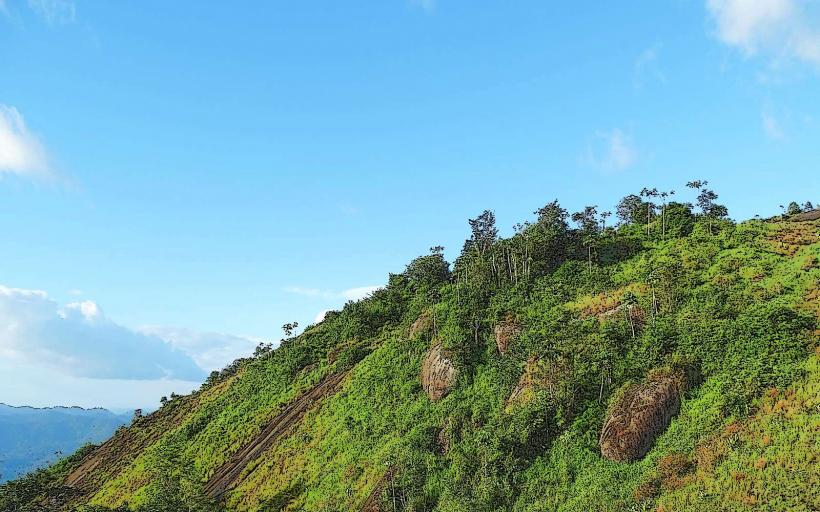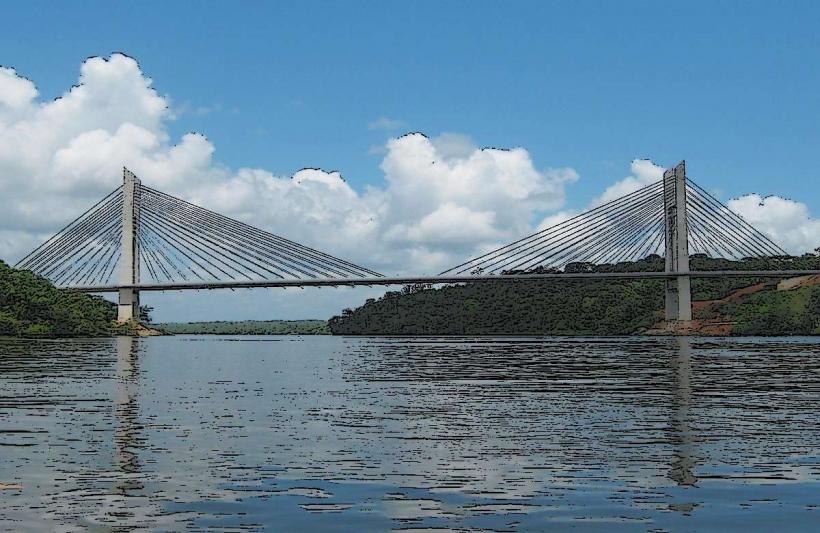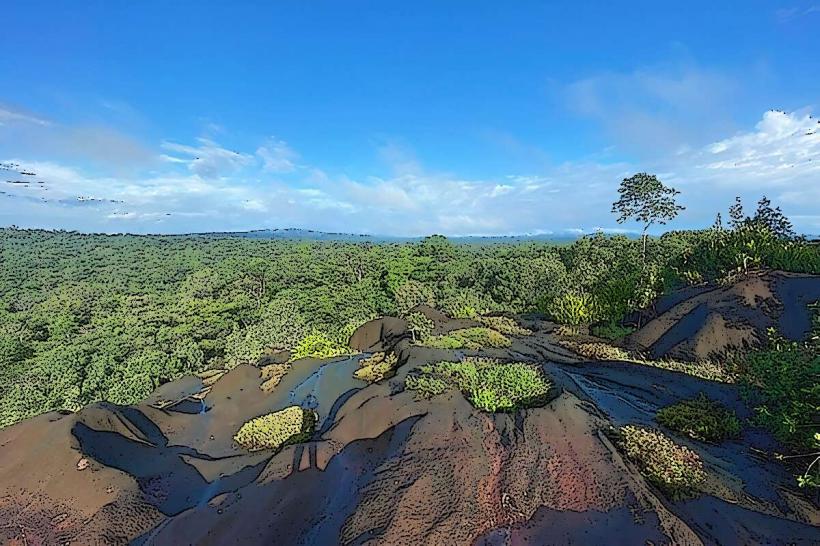Information
Landmark: River Oyapock BridgeCity: Regina
Country: French Guiana
Continent: South America
The Oyapock River Bridge is a notable infrastructure project that spans the Oyapock River, which forms part of the border between French Guiana (an overseas region of France) and Brazil. It is an important transportation link between the two countries and serves as a symbol of cooperation and connectivity in the region.
Key Details:
Location and Geography:
- The Oyapock River Bridge connects the towns of Saint-Georges in French Guiana and São Gabriel da Cachoeira in Brazil, crossing the Oyapock River.
- The river itself flows through the Guiana Shield, forming part of the natural border between the two countries. It is a significant waterway for local transportation and commerce in the region.
Construction and Opening:
- The bridge was officially opened on March 20, 2017, after years of planning and construction. It was a major milestone in regional infrastructure development.
- The bridge is a cable-stayed structure, designed to withstand the challenges of the tropical climate and the river’s seasonal flooding.
Design and Dimensions:
- The total length of the bridge is approximately 370 meters (1,214 feet).
- The bridge features two lanes for vehicle traffic and is designed to accommodate both cars and trucks.
- It has a clearance height of 7 meters (23 feet) above the water to allow for the passage of boats underneath, which is important for local maritime transport.
Economic and Political Significance:
- The Oyapock River Bridge plays a vital role in enhancing trade, tourism, and cultural exchange between French Guiana and Brazil, which had previously been limited by the lack of a bridge across the river.
- Before the bridge was constructed, the only way to cross the Oyapock River was by ferry, which was limited in capacity and often dependent on weather conditions.
- The bridge facilitates trade and economic cooperation, particularly in the context of the Amazonian region, where transportation infrastructure can be scarce and challenging due to the dense rainforest and river systems.
Impact on Local Communities:
- The bridge has significantly improved accessibility between the two regions, benefiting local populations who can now more easily travel and transport goods across the border.
- It has fostered closer ties between the communities of Saint-Georges and São Gabriel da Cachoeira, as well as between French Guiana and Brazil more broadly.
- Tourism has also been positively impacted, as travelers can now cross between the two countries more conveniently, opening up new opportunities for tourism-based businesses.
Challenges and Considerations:
- The region around the bridge remains remote and ecologically sensitive, so maintaining the balance between development and environmental preservation is crucial.
- There are ongoing efforts to improve the road network on both sides of the bridge to support increased traffic and economic activity.
Symbol of Cooperation:
- The construction of the bridge was a collaborative effort between the French and Brazilian governments, as well as with local authorities. It stands as a symbol of regional cooperation and the shared interest in improving the quality of life and economic prospects for people living on both sides of the border.
Conclusion:
The Oyapock River Bridge is an essential piece of infrastructure that enhances connectivity between French Guiana and Brazil, supporting trade, tourism, and cultural exchange. Its opening has had a significant positive impact on the local communities, making travel and transportation easier and more reliable. The bridge also highlights the ongoing cooperation between the two countries, particularly in the context of the Amazon region.




